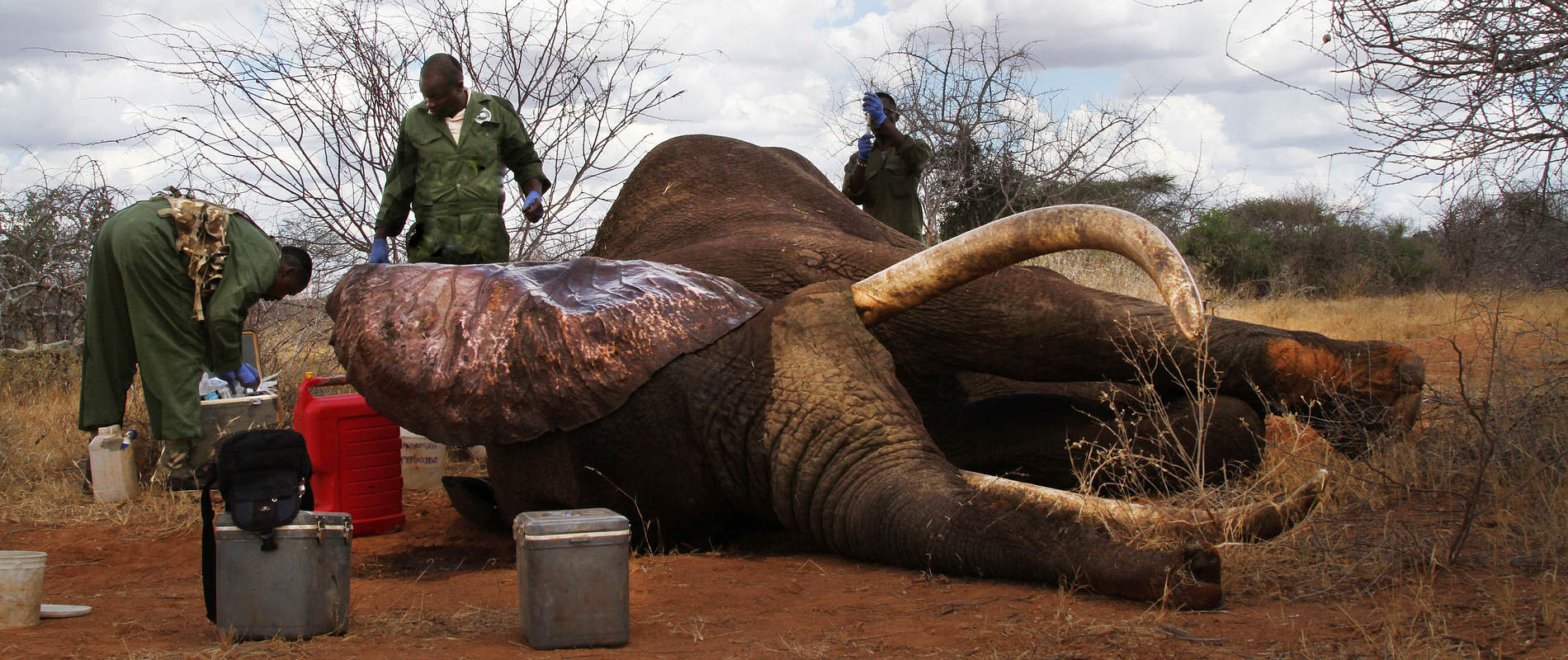Tsavo is one of the last wild frontiers. This makes it a rare jewel in our natural world, but looking after such a vast expanse — not to mention the creatures who call it home — comes with its fair share of practical challenges. That is where our airwing has proven invaluable, offering a level of visibility and accessibility that could never be achieved through a ground-level approach alone.

Routine patrolling is essential for keeping expansive protected areas like Tsavo safe
During a routine aerial patrol on the morning of 24th April, one of our pilots spotted a majestic tusker traversing Tsavo. As our team is trained to do, he carefully surveyed the elephant to see if anything was amiss. His scrutiny was well-founded: The tusker had pus on his shoulder, indicating an infected wound.

A small septic wound on the shoulder was what the trained eye of the pilot spotted

More photographs were taken from the air to share with SWT/KWS Tsavo Mobile Veterinary Unit
He marked the bull’s GPS coordinates and took pictures of him, before sharing the situation with our Kaluku Field HQ. Our fixed-wing pilot immediately flew to Voi, where KWS vet Dr Poghon and the rest of the SWT/KWS Tsavo Mobile Veterinary Unit were waiting to be collected. As everyone convened, we loaded up the helicopter with all the necessary supplies for the treatment. This was a vital step, as the patient was in such a remote location that no ground support would be possible. Based on the aerial photos, Dr Poghon was able to ascertain the exact dosage needed for the anaesthetic dart.

The patient was darted from the air and then the moment he fell the helicopter landed in order for the team to get to work

Jerry cans of water were carried so that he could be kept cool throughout the operation
The team eventually found the bull who had moved some distance from the original coordinates and he wasn’t in favourable terrain for treatment. The pilot used the helicopter to gently shepherd him into more open country, where Dr Poghon was able to successfully land the dart. As soon as the patient succumbed to the anaesthetic, the team landed and went to work. The injury, located on the elephant’s shoulder, was very septic. Although it had a small opening, it was surprisingly deep, almost enveloping the vet’s forceps. The wound’s location and level of infection suggests that it was the result of a poisoned arrow, shot from an elevated position.

His would has septic and very deep, engulfing the vet's forceps

The wound was thoroughly cleaned, then antibiotics and anti-inflammatory drugs administered

Finally the wound was packed with green clay, drugs administered before the helicopter was started up and the reversal drug given.
After cleaning out the wound and packing it with healing green clay, the team administered antibiotics and anti-inflammatories. At last, the patient was ready to be revived. This required careful coordination, as the team had to be ready for immediate liftoff. Everyone waited in the helicopter while Dr Poghon administered the revival. As soon as the bull began to move his massive head, the aircraft took flight, hovering a safe distance away so as to observe the bull without adding additional stress to his situation. Fortunately, he seemed completely unfazed by the whole ordeal. He slowly shook the dust off body and then lumbered off, back to roam the wilds of Tsavo.
This was an old bull, likely in his late 50s or early 60s. He had already lost condition as a result of the sepsis, and without intervention, it is very possible that he could have succumbed to the wound. Fortunately, our eagle-eyed pilot and fast-acting team were there to offer a lifeline to this majestic fellow.
